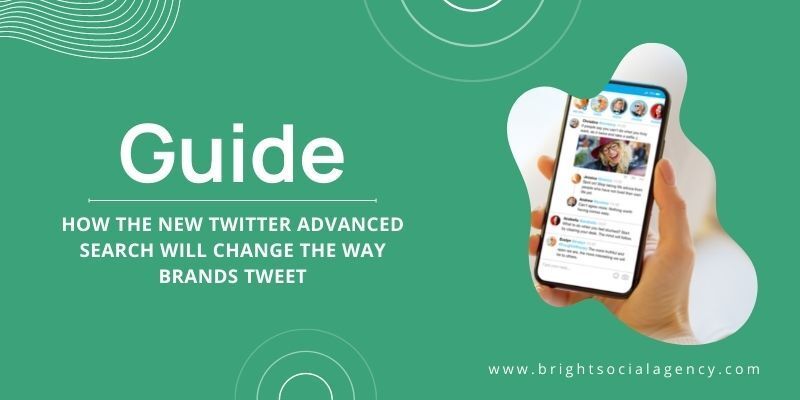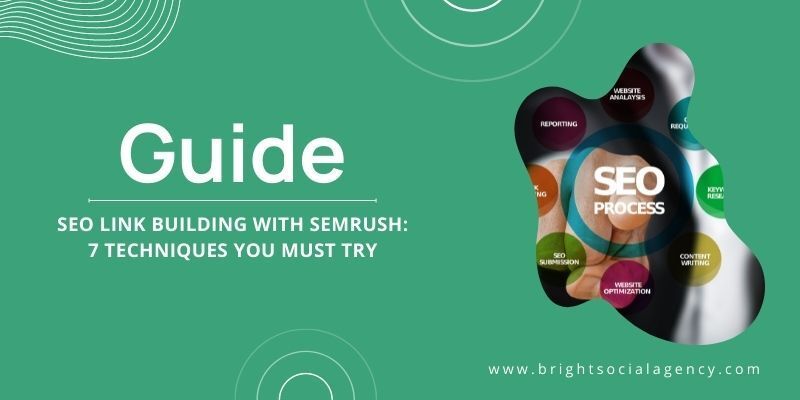10 Ways to Future Proof Your Social Media Marketing Strategy
The majority of marketers are concerned about the uncertain future. Due to rapidly changing circumstances, expanding digital marketing trends and technology, and fluctuating client preferences, brands can become obsolete in a matter of minutes.
A large rival, new laws, or technical advancement can all constitute a threat to a business. As a result, the concept of future-proofing may assist businesses in rethinking their marketing strategies to be less sensitive to future issues.
Despite the complexity of today's climate, many organizations still rely on old-fashioned marketing methods such as batching and blasting. However, keep in mind that not everyone's the same. A successful social media marketing strategy is all about getting the greatest bang for your buck with the least amount of money invested.
1. Be Future-Forward

The importance of being data-driven and how that can help you make good decisions in the present, but what about making sure that your content is still relevant in five years?
That's where future-forward thinking comes in. The phrase "future-forward" was coined by marketing strategist Dan Weitzel as a way for brands to adapt their strategies and tactics for a fast-changing world. He says that "thinking about tomorrow first is the key to staying competitive long term".
2. Keep Up with the Latest ‘Relevant’ Platforms and Trends

Staying up to date with the latest platforms and trends is key to keeping your social media marketing strategy relevant. This means that you need to:
- Pay attention to what your competitors are doing.
- Keep tabs on what's trending in your industry.
- Look out for new social media tools, or updates on existing tools.
3. Prioritize Quality Content

As the old adage goes, "Content is king." It's also the most important part of your social media marketing strategy.
Content creation service is what will keep your audience engaged and coming back to your social media accounts. It will get them to take action and help you meet your business goals.
So how can you create quality content that will engage with customers?
- Choose Your Platform(s) Wisely: If you're not using multiple platforms (at least two or three), consider adding one more platform or two to your mix. If you already have a presence on several platforms, think about which ones are most effective at driving traffic back to your website or sending people directly through other channels like email lists, landing pages, and newsletters. Now prioritize those platforms based on their effectiveness in driving leads/traffic/sales—and then focus on those channels first!
- Know Your Audience: Next up, it's time for an audit of all existing content types including blogs posts, videos (both short-form and long-form), and images (photos/graphics) that reflect the voice of who “you” are as an organization.
4. Take a Video-First Approach to Social Media

Video is one of the most engaging forms of content, and it's also a great way to get your businesses or products noticed by new audiences. Adding a video to your social media marketing strategy can help you reach people who might not have heard about you before or who visit your site but don't convert into customers.
Video marketing is more than just creating a few Facebook and Instagram videos. It's about understanding the importance of video in general and then taking action based on that knowledge. In other words, it's not enough to just start making videos; you need to ensure they're helping you achieve your goals when posted across various social platforms.
5. Pay Attention to Data and Analytics

Your social media company should be data-informed. That may sound like a buzzword, but it's actually a good idea to make decisions based on what you see happening in the real world. You can monitor your analytics and look for patterns indicating how content resonates with audiences. For example, if you notice that certain types of posts get more likes than others or that some posts get more shares than others, then you know to focus more on producing those types of content in the future.
Using data can also help identify opportunities for reaching new audiences by showing you where people are engaging with your brand online. It'll give you insight into what other platforms are being used most frequently by consumers who might be interested in your products or services. These insights will allow you to target them with tailored ads across all relevant platforms so as not to waste money on ads targeting users who aren't a good fit for what they're selling at any given time.
6. Use Influencers to Constantly Reach New Audiences

Influencers are people with a large following who can help you reach new audiences. They can also help you get the same audience as their own, which is "multiplying" your influence.
For example, if I have 1,000 followers on Twitter, and they all follow me (and therefore see my tweets), then I can say that my influence on Twitter is 1,000 followers. But if an influencer has 1 million followers and follows me (and therefore sees my tweets), now we're talking about an increase in my influence from 1,000 to 1 million!
7. Think How Your Content Will Look Across Devices.

You can use a responsive design, which automatically adjusts to fit the device. This makes it easier for your content to be viewed across devices, and it will look great on any screen size.
If you want more control over how your site looks on different devices, you could use a mobile-first approach or even a mobile-only approach where all the content is created specifically for mobile devices.
8. Create A Social Media Strategy That Supports The Future You Want.

- Determine your goals.
- Create a social media marketing strategy that supports the future you want.
- Consider your current audience and their needs, preferences, and behaviors.
- Determine how you want to grow your business in the next 5 years by identifying potential barriers to entry within your industry.
- Understand how content will look across devices: PCs/laptops vs mobile phones/tablets vs wearables (etc.)
- Evaluate what content works best on different social media marketing platforms (Facebook vs Twitter vs LinkedIn vs Instagram etc).
9. Consider Your Ideal Customer's Journey.

Understanding your ideal customer's journey to make a purchase is fundamental to future-proofing your social media marketing strategy.
Your ideal customers start with some initial pain point that they want to be fixed, which can be anything from "I'm too busy" to "I'm not confident in my photography skills."
Next, they seek information on how to solve their problem to decide what products or services might help them achieve their goal. After deciding on what solution will work best, they take action and buy something that meets all of their needs and requirements. The final step is using the product/service to achieve the desired outcome (e.g., feeling more confident).
What's important here is that each stage of this process requires different content types: awareness-building content at first; then educational content later when a prospect is ready for more information; finally, transactional and promotional messages as prospects move closer toward making an actual purchase decision and converting into customers with you!
10. Cater to Those Who Want to Get to Know You on Social Media.
Cater to those who want to get to know you on social media. Your customers want a feel for your brand and what it stands for, not just your products and services but your culture, values, mission, and team.
They want to see photos of you in action at events or hear about the people who make up your organization. They also wish to validate that their experience aligns with yours. In other words: "Tell me something I don't know about myself by telling me more about yourself first."
Future Proof Your Social Media Marketing Strategy

Social media is a powerful marketing tool that can help you connect with your customers and brand, build relationships, and reach new audiences.
If you want to future-proof your social media marketing strategy, there are five things you can do:
- Update your content regularly
- Create a Facebook page for your business
- Use hashtags on Instagram to increase impressions and engagement
- Set up an automated posting schedule for Facebook, Twitter, and LinkedIn (if applicable)
- Get involved in the community by joining groups relevant to your industry
Conclusion
It's important to remember that social media marketing is not a sprint; it's a marathon. Thinking about the long game is the best way to future-proof your strategy. Think about how your content will look across devices, and consider every possible platform your target audience may use.
There will always be new platforms emerging and old ones fading away, but in the end, it's about the quality of your content and how well it speaks to potential customers that matter most! Bright Social Agency is the one-stop shop for all your social media marketing needs if you are looking for professionals to future-proof your social media marketing strategy.
This post may contain affiliate links, which means that we may receive a commission if you make a purchase using these links.










